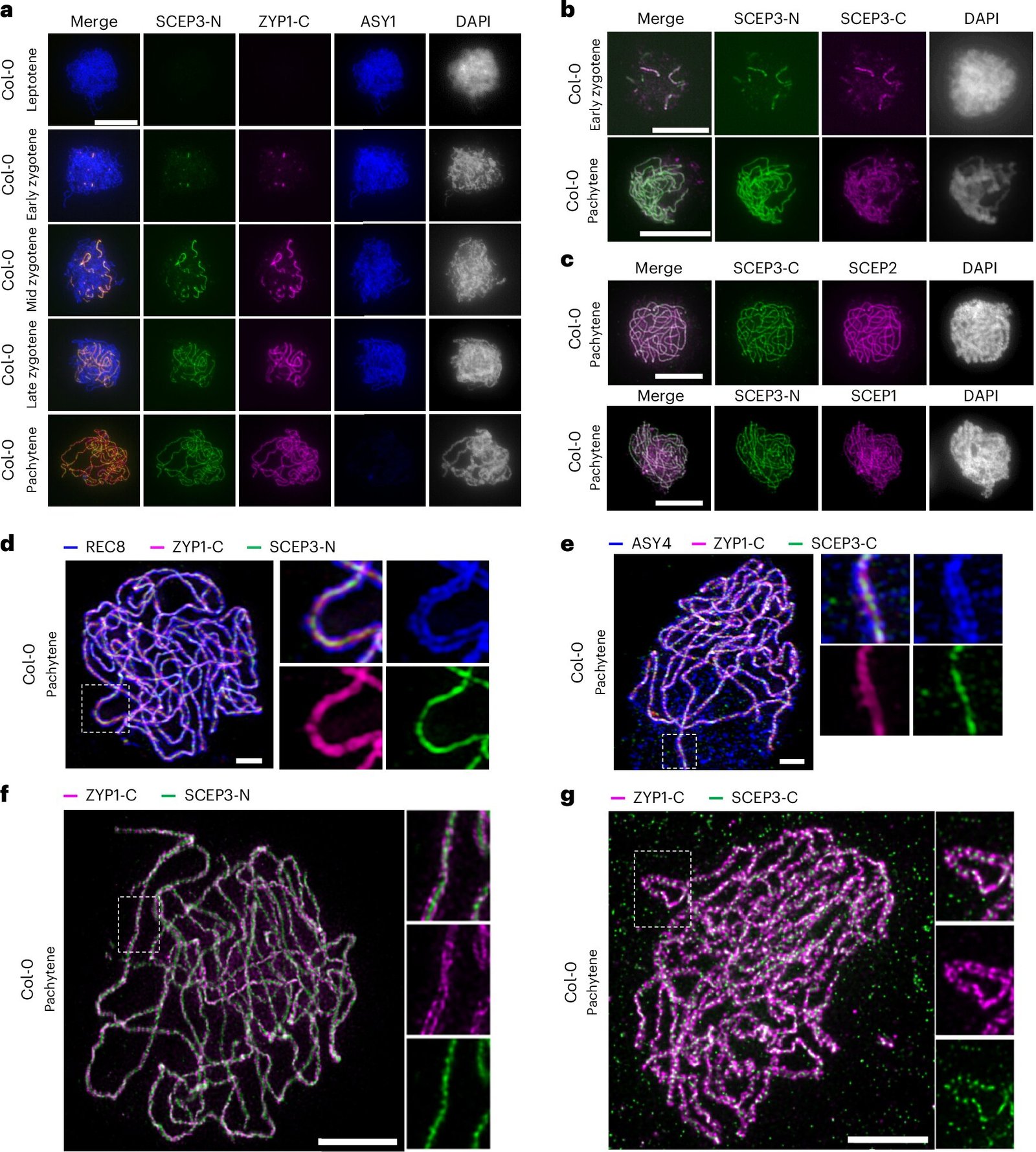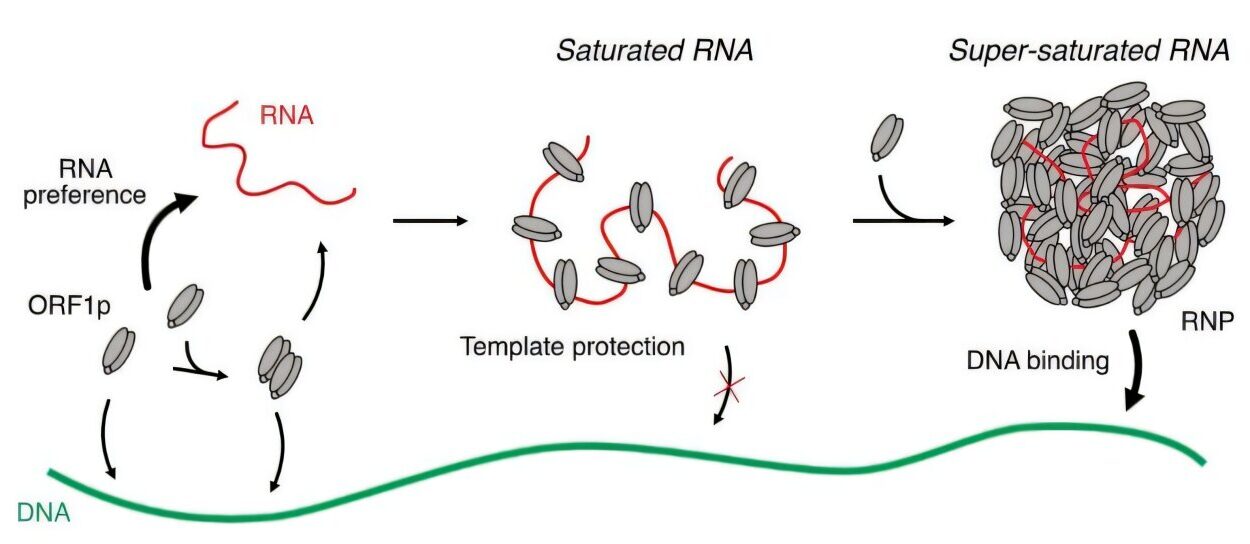Deep within the delicate tissues of a flowering plant, a molecular dance unfolds—one so intricate, so essential, that life itself depends on its flawless execution. It happens quietly, in the microscopic theater of cells, as chromosomes—those twisted ladders of genetic instruction—meet, entwine, and exchange pieces of themselves to create something utterly new.
This process, known as meiosis, fuels the diversity of life. And now, in a groundbreaking discovery, scientists at the IPK Leibniz Institute have found a previously unknown protein that sits at the very heart of this cellular choreography.
They’ve named it SCEP3, and it is not just another supporting actor. It appears to be a master organizer—a crucial piece of the puzzle that enables plants to mix and distribute their genetic material with astonishing precision. Their findings, published in the prestigious journal Nature Plants, could have sweeping implications not just for evolutionary biology, but for the future of agriculture in a warming world.
Cracking the Genetic Code of Diversity
Sexual reproduction in plants, as in animals, begins with meiosis—a cellular process that creates germ cells like pollen and egg cells, each carrying half the usual number of chromosomes. When these unite, the resulting offspring inherit a complete, reshuffled set of genes from both parents. This reshuffling is more than nature’s whim—it’s evolution’s engine.
A central feature of meiosis is genetic recombination—the exchange of DNA segments between chromosome pairs. This mixing is facilitated by a complex protein structure known as the synaptonemal complex, a molecular zipper that aligns parental chromosomes and orchestrates the delicate swap of genetic material.
Until recently, only three core proteins—ZYP1, SCEP1, and SCEP2—had been identified as part of this critical structure in the model plant Arabidopsis thaliana. But what held it all together? What determined how and where genes would swap places?
Enter SCEP3, the newly discovered protein that seems to anchor the entire apparatus.
SCEP3: The Molecular Compass
To uncover SCEP3’s role, researchers used the cutting-edge gene editing tool CRISPR/Cas9 to create mutant Arabidopsis plants that lacked the protein. The results were stunning. Using high-resolution microscopy, the team could see that without SCEP3, the synaptonemal complex simply couldn’t form. The carefully orchestrated zipper mechanism came undone. Chromosomes wandered aimlessly.
But that wasn’t all. The mutants also revealed a surprising change in how genetic recombination occurred.
Under normal conditions, male Arabidopsis plants experience more recombination events than females. However, in the SCEP3-deficient mutants, that difference vanished—both male and female cells displayed equal and elevated crossover events, randomly distributed along the chromosomes. Without SCEP3, it seems the cellular machinery lost its internal map, allowing crossovers to happen more freely.
“We found that SCEP3 is a crucial component of the synaptonemal complex,” explained Dr. Chao Feng, the study’s first author. “It is evolutionarily conserved in plants, and without it, the complex cannot form.”
But SCEP3 isn’t just structural glue. It also appears to serve as a regulatory compass, guiding where and how often genes are reshuffled. “Our results show that SCEP3 significantly influences both the distribution and number of crossovers,” Feng added.
A Window into Evolution—and the Future of Food
Why does this discovery matter? Because recombination isn’t random. It’s tightly regulated in plants, often limiting the number of gene shuffles per generation. For breeders and geneticists, that limitation is a hurdle. The more crossovers, the greater the chance of producing plants with new and favorable traits—traits that could help crops resist disease, survive droughts, or yield more food per acre.
By identifying SCEP3 and its key role in meiosis, scientists now have a powerful new tool for understanding—and potentially enhancing—the natural mechanisms that drive genetic variation.
“The study expands our knowledge of the complex mechanisms of meiosis and genetic recombination, which are crucial for the evolution and diversity of life,” said Dr. Stefan Heckmann, head of the Meiosis research group at the IPK Leibniz Institute. “Since SCEP3 is evolutionarily conserved, this points to similar functions in other plant species and even other organisms.”
If this holds true across crop species—from wheat and maize to rice and soybeans—then tweaking the action of SCEP3 could become a game-changer in plant breeding.
Breeding Smarter, Not Harder
Plant breeders have long relied on crossing and selection to develop better varieties. But they’ve been constrained by biology—specifically, the limited number of crossovers during reproduction. If those crossovers can be increased or better controlled by manipulating proteins like SCEP3, the pace of agricultural innovation could accelerate dramatically.
“A better understanding of how crossover formation is controlled will enable breeders to develop new varieties with favorable traits in a more targeted way,” said Dr. Heckmann. “This could ultimately help to adapt crops to climate change, improve resistance to diseases and pests, and also increase yields.”
In other words, SCEP3 might help scientists fast-forward evolution—harnessing the deep logic of nature to solve very human problems.
The Hidden Blueprint Behind Life’s Variability
Though it operates far below the surface of perception, SCEP3 has now stepped into the spotlight as one of life’s unseen architects. Its role in organizing chromosomes, shaping diversity, and potentially influencing evolution itself gives us a deeper appreciation of just how complex and intelligent the machinery of life truly is.
This is the beauty of modern biology: it doesn’t just study nature—it collaborates with it. Through tools like CRISPR, imaging, and genomics, scientists are decoding the instructions written in every leaf, petal, and seed. With every new discovery, we move closer to understanding not just how life works, but how to preserve and improve it in an ever-changing world.
And as it turns out, sometimes the biggest breakthroughs come from the smallest pieces—the silent proteins that hold the fabric of the future together.
Reference: Chao Feng et al, The synaptonemal complex central element SCEP3 interlinks synapsis initiation and crossover formation in Arabidopsis thaliana, Nature Plants (2025). DOI: 10.1038/s41477-025-02030-9






